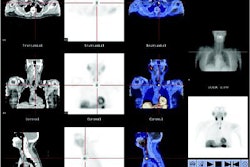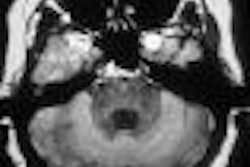Women with an intermediate or high risk of developing coronary heart disease may benefit from SPECT myocardial perfusion imaging in addition to the standard exercise tolerance tests, according to research presented at the 2005 American College of Cardiology (ACC) meeting in Orlando.
"Even with a steady decline in cardiovascular deaths in men, cardiovascular disease has remained unchanged in women and may have actually increased," explained Dr. Justin B. Lundbye, a cardiology fellow at Hartford Hospital in Hartford, CT.
"Early diagnoses of coronary heart disease in women by utilizing exercise myocardial perfusion imaging, which offers higher diagnostic accuracy, may be a potential utility to impact these statistics," he added.
Coronary artery disease afflicts 5.9 million American women per year, and accounts for more than 240,000 deaths among women every year, Lundbye said.
Despite studies showing the significance of myocardial perfusion imaging, the current American College of Cardiology/American Heart Association guidelines recommend exercise stress tests alone for evaluating coronary heart disease and risk stratification in women. However, a large number of women will have false-positive results, requiring further tests such as coronary angiograms.
For this investigation, Lundbye and his team examined data on 1,020 women considered to be at intermediate-to-high risk for developing coronary artery disease. Participants underwent the recommended exercise tolerance test, and were categorized as low-, moderate-, or high-risk based on their Duke treadmill score.
Tc-99 sestamibi myocardial perfusion imaging (MPI) was also performed on the patients, with clinicians labeling the results as either normal or abnormal.
The researchers found that women with moderate risk on the Duke treadmill score had an overall annual rate of adverse events (myocardial infarction, revascularization, cardiac death) of 3.3%. Abnormal MPI identified 16.8% of those at risk within this group, compared to only 1.8% identified with the exercise stress test.
Women classified as high risk on the Duke treadmill score had an overall annual event rate of 12.2%. MPI further stratified 28.2% of these patients, compared to only 3.8% using the standard test.
"In our study, using MPI we were able to identify those women who were at lower risk of any future cardiac events and therefore do not require further testing. Furthermore, MPI identified those at high risk of future cardiac events and therefore may require more aggressive testing. Exercise MPI provides considerable, incremental prognostic information compared to exercise stress test alone," Lundbye concluded.
By Jerry Ingram
AuntMinnie.com contributing writer
April 12, 2005
Related Reading
SPECT/CT developing role in coronary artery disease assessment, March 22, 2005
MDCT maybe equivalent to MRI, tops echo and SPECT for heart function, February 15, 2005
ECG and peripheral arterial disease identify SPECT candidates, January 11, 2005
SPECT reveals deterioration in acute SAH patients with vasospasm, October 22, 2004
Copyright © 2005 AuntMinnie.com



















